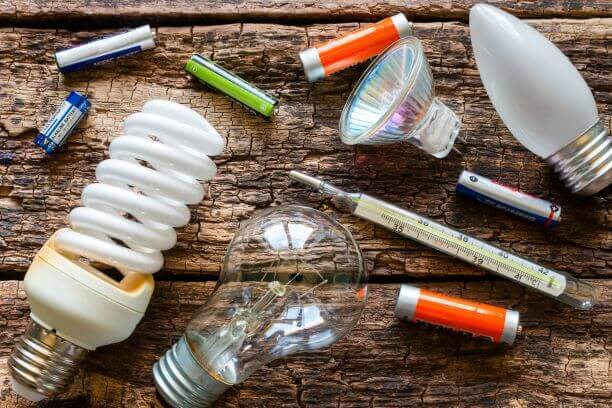
Avoiding the Danger Zone: How to Handle Household Hazardous Waste
Learn how to dispose of hazardous waste plus how to recognize which potentially hazardous items around your house need special handling to ensure proper disposal.Byline: BTB Editor
February 14, 2025 / Time to read: 5 min
Though the term “hazardous waste” may sound scary, you probably have a lot of it gathering dust in your home right now.
Not sure what to do with the leftover paint, household cleaners and other hazardous items sitting idle in your basement? Once we explain what items count as household hazardous waste (HHW), we’ll help you understand how to dispose of it in a way that’s safe for people and the environment.
What Is Household Hazardous Waste?
- Can catch fire
- Can react
- Can explode
- Are corrosive
- Are toxic
In other words, HHW products commonly contain hazardous ingredients and require special care to ensure proper disposal.
There are
- Caution (lowest level of hazard)
- Warning (moderate level of hazard)
- Danger (highest level of hazard
So what household items are considered
- Adhesives
- Aerosols
- Automotive fluids
- Batteries
- Cleaners
- Compressed gas tanks
- Drain openers
- Fungicides
- Light bulbs
- Lighter fluids
- Nail polish and removers
- Oil-based paint
- Paint thinners and strippers
- Pesticides
- Pharmaceuticals
- Polishes
- Sharps and needs
- Thermometers
- Waxes
Proper Household Hazardous Waste Disposal Matters
If you recycle or throw away HHW without the necessary precautions, there can be
Tips for Disposing of Household Hazardous Waste
As a leader in environmental services, we’re here to guide you through responsible and convenient HHW disposal options to prevent potential harm to the environment and your home.
Never Toss These in the Trash
- Paint
Only paints that are non-toxic and water-based, such as latex and acrylic paints, can be thrown away with the rest of your trash; however, they must be dry first. Open the lid and allow the paint to dry out before putting it in your trash bin. Oil-based paints, on the other hand, must be disposed of as hazardous waste. Keep in mind that local regulations may vary, so check with your town’s guidelines before tossing any paint, especially in large quantities. - Lightbulbs
Somelight bulbs contain mercury, which is toxic. To safely dispose of light bulbs, take them to a store that recycles them or order aPack-Back kit . Once you fill up your kit, all you have to do is call for a pickup or drop the kit off at a local FedEx location. - Batteries
Batteries , lithium and rechargeable ones in particular, can start fires in trucks and landfills. You can collect batteries in a box and take them to a store that recycles them. You can also load up aPack-Back Bucket with used batteries and ship it for recycling when you’re ready. - Automotive Fluids
Many places, including auto parts stores, accept motor oil as long as it’s in a labeled, closed container. You can also check with your recycling provider to see if they’ll accept other automotive fluids (like break fluid and fuel) curbside, either in its original container or a provided container.
Stick to Original Containers
Always keep household hazardous waste materials in their
Never Combine
Follow Instructions
Always follow labeled disposal instructions to avoid injury and environmental harm. Take note of specific safety precautions, including wearing proper protective gear like gloves and goggles.
Never Pour Down the Drain
This rule goes for indoor and outdoor sinks, bathtubs and storm drains. Pouring HHW down drains can
Reach Out to the Pros
When in doubt, ask for help. If you’re unsure how to dispose of an item, call your local public works. They may have HHW collection events or pickup and drop-off services. You can also contact a Republic Services representative to learn how we can help you with
Play it Safe
When it comes to hazardous waste, it’s best not to hazard any guesses. By following the above guidelines, you’ll be doing your part to ensure the safety of others and the environment. And remember, always keep HHW products out of reach of children and pets.
